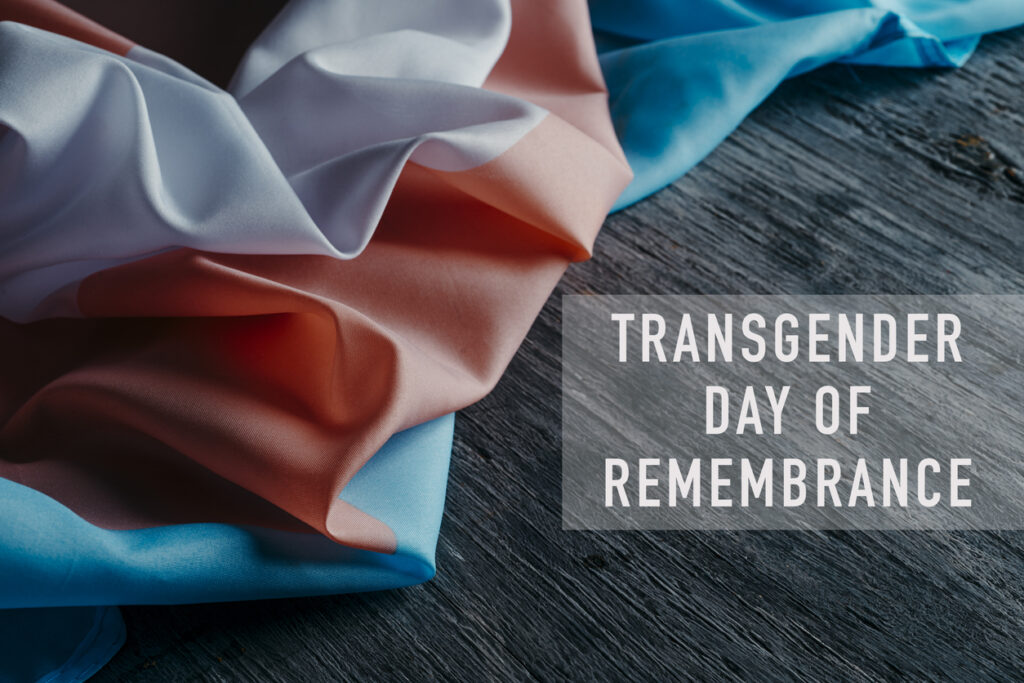Trans Day of Remembrance takes place annually to commemorate victims of transphobic violence but, in the week around that, Trans awareness week takes place to promote awareness, education and support for Trans and non-binary people.
Workplaces have taken good strides to promote greater support and trans inclusion but there’s still a lot of work to do.
There are a number of them that still do not have policies or procedures in place that can support a Trans or non-binary person that is either transitioning or will be changing a name.
The HR ‘hot potato’
Typically, it’s not until someone takes steps to transition that the appropriate training or policy is created which, in turn, leads to a transitioning colleague becoming an HR ‘hot potato’ where there isn’t always clarity around a process that will support them.
The training aspect is crucial as many managers and people in HR are sometimes at a loss. They often don’t know what the right things to do are or what the reality will mean in terms of the appropriate level of support someone will need. It’s also important people know how to identify what transphobia is and what that type of bullying, harassment and discrimination looks like.
Some HR departments I’ve worked with have shown a distinct lack of knowledge or idea of what to do. Cobbling together a policy in haste has sometimes not had a holistic enough idea of how to implement a way of working that is inclusive and will be representative of trans feminine, trans masculine and Non-Binary identities in addition to supporting gender fluidity or non-conformity.
Other issues that have come up will be whether or not internal systems are representative or recognise people’s gender identity or prefix. What types of facilities will be inclusive?
People have been subjected to having to ‘out’ themselves in order to verify background checks for education or confirming previous places of work.
Poor processes and forced disclosure
There are also many gaps in onboarding and candidate screening around disclosures or background checking.
In some cases, people have been subjected to having to ‘out’ themselves in order to verify background checks for education or confirming previous places of work. In some cases, this has sometimes caused issues with how someone can verify information especially when 3rd party organisations are used in background checking
Most haven’t had the appropriate training or have approached the conversation in the best way which can prevent the candidate from accepting the job, or feeling that their introduction to a company has been clunky or not as welcoming or inclusive as the company would like.
Having the right documentation for right-to-work is important and requires procedures but in some cases, it’s important that there are clear processes around what information is required and how it is used.
There will always be types of information needed for compliance and to satisfy right-to-work, tax and identity verification. However, in the UK, there also needs to be a consideration with how that relates to gender identity or trans status.
Protecting the trans community
Under the Equality Act of 2010, gender reassignment is a protected characteristic. However, it doesn’t formally provide clear representation or protection for those who are non-binary or clarity around the trans status of someone not actively in a process of transition.
However, it’s understood that trans status cannot be revealed or shouldn’t be disclosed without someone’s permission. It also brings up the question of whether or not this is necessary and why is this seen to be required in the first place.
The detachment I’ve felt from the gender assigned at birth I feel can only be described as having a phase in my life where I wore black nail varnish or had green hair.
It was a part of my life but isn’t representative of who I am now and isn’t something for the most part that is relevant to what I do now. I would also add that it’s wise if you do have green hair never to get sunburned or you will run the risk of being called a strawberry!
Not having this approach or procedure when many places of work state they want people to ‘bring their whole selves’ to work or to feel that they represent people needs to put some attention, awareness and investment into this given that there are many aspects to consider and to not have anything in place does seem to be a shocking oversight.
The key areas I have supported in my career is around supporting businesses, leaders and departments on what gender identity is, making policy, how to use pronouns and how to have conversations with people. I work on making user journey’s and client and customer journey’s gender-neutral, trans-inclusive and also how to be a trans ally.
If there isn’t a policy in place don’t wait for someone to transition – prioritise it and place for regular review every 2-3 years.
Trans Day of Remembrance
Trans Day of Remembrance is difficult for many people, it also can be a very reflective time that inspires more action from allies. Showcasing internal and external role models, listening to stories and lived experiences from Trans and Non-Binary people can provide clearer insights and better forms of inclusion.
Top areas for inclusion at work can be:
-
Enhanced categories for gender identities on internal systems
-
Resources and clarity around pronouns and how to use them effectively
-
Ensuring there is appropriate training and knowledge around trans and non-binary people and clear stance around transphobia and support for people being able to spot it and respond to it
-
Policies that are representative and will ensure that people are supported throughout transition with clarity around paid leave or time off allowances and medical insurance (where applicable)
-
Ensure that customer and client-facing areas of websites allow different prefixes and gender identities where applicable –( a number of people now have Mx as a title for example.)
If there isn’t a policy in place don’t wait for someone to transition – prioritise it and place for regular review every 2-3 years and ensure that there are benefits and benefit providers and 3rd party contractors for HR services are familiar with trans inclusive ways of working.
Interested in this topic? Read Diversity and inclusion: Managing gender transition at work
[cm_form form_id=’cm_65a14c3f5da64′]






